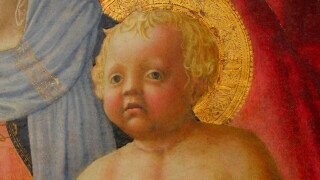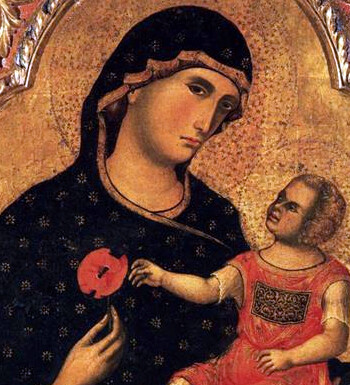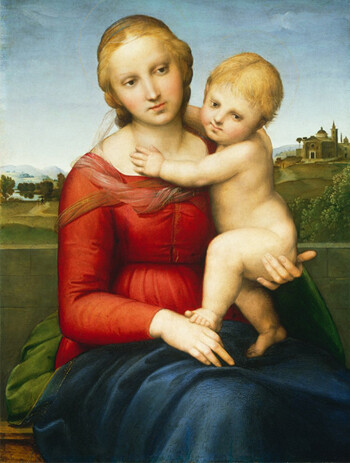Why Medieval Art Weirdly Depicted Babies With Old Faces

Receding hairlines and full-on six-packs are not typically what you think of when picturing medieval religious art, let alone depictions of babies in general. Yet, this didn’t stop the medieval period’s obsession with portraying babies as full-grown adults. Why the emphasis on unrealistic man-baby characters in the first place? The Vintage News reported that for babies, “There are scientific reasons behind their beauty and Oxford University proved their cuteness to be an evolutionary survival mechanism. Essentially, their looks ignite the wish in adults to take care of them.” Though by the look of medieval art, you’d assume anything but. Though the short answer is … Jesus had a lot to do with it.
In the New Testament, Baby Jesus is not described in appearance. Christians in the medieval era took the liberty of deciding his appearance for themselves, thinking, “Yeah! What if he resembled a middle-aged accountant?” Results are not in on whether that was their exact wording, but Christian theology has a hell of a lotta theories on why they thought baby Jesus was actually born a baby man.

Paolo Veneziano
In the medieval era, artists weren’t yet interested in realistic depiction. Realism wouldn’t appear until later in the Renaissance period. That type of expression was just too real for nobility and apprentices. For the medieval palette, art that focused on aesthetically pleasing images was in style, though perhaps their definition of aesthetic appeal ought to be taken with a grain of salt. Much art was idealistic, inspiring artists to be imaginative, capturing concepts more so than regurgitating the exact way that gazebo appeared on that lake earlier that day with a swan or two. Religious art was in high demand via the church, and they provided most of the business artists received. Hence, the artists gave them what their repeat customers wanted.
Don't Miss
Much of the content they longed for were illustrations of biblical babies from Moses to John the Baptist, and of course, the holiest of babies to them: Jesus Christ himself. In turn, this is why many paintings of the medieval period look so similar-- they kept up with this churchy aesthetic. In addition, the value of art at the time did not depend on freedom of expression; rather conceptuality was prioritized. Like an overly passionate middle school art teacher, the medieval era encouraged its artists to be free-flowing no matter the “artistic” cost.

Cimabué
Later on, citizens of the Renaissance were getting rich quick and could afford to commission artists for personal use, such as painting portraits of their children, with the goal of having their kids, according to The Collector, “look like children and not have the face of their grandparents.” And a very level-headed ask, at that.

Raphael
Iconography also had something to do with it. For instance, a dove in Christian art is a symbol of the Holy Spirit, while Baby Jesus and Mary are often representative of knowledge, salvation, love, and insight. Though Mary looks pretty disengaged.

Raphael
Though how does this explain why baby Jesus was portrayed as a grown man? To reiterate, the church really couldn’t get enough Jesusy-aesthetic. If it wasn’t Christ, it wasn’t viby enough.
A fair amount of Christians prescribed to an idea known as homunculus. Translating to little man, this was the allusion that an alchemist named Paracelsus introduced: that the creation of a child in full adult form awaited in the body of its parent before its conception. Of course, Paracelsus really believed he was making headway in the magical science department back in the 1500s.
As one of the most requested figures in art at the time, questions about what Jesus represented were taken seriously, so seriously in fact that many defied science to get their point across. Many Christians believed that Jesus was born a fully grown adult, having all the answers a divine power would have, only before most even develop critical thinking skills. The belief that a baby was not a comforting image to look up to when you had serious questions about life and death led artists to depict Jesus as a grown adult to reassure followers that he’d have control. Because a baby probably wouldn’t be able to make you feel safe in the event of a crisis and/or holy war.
For more of Oona’s sarcasm and attempted wit, visit her website oonaoffthecuff.com.
Top Image: Masaccio